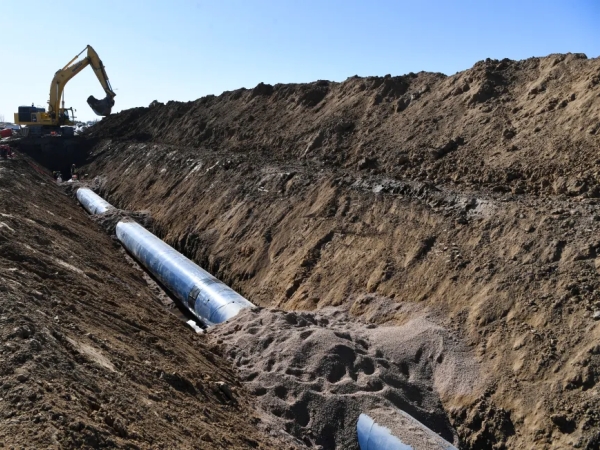Protecting buried oil pipelines from corrosion is crucial to ensuring their longevity, preventing leaks, and maintaining the integrity of the transported fluids. Various anticorrosion technologies are employed to safeguard buried oil pipelines. Here are some common methods of buried oil pipelines anticorrosion.

Petroleum Asphalt Anticorrosive Layer:
Comprising petroleum asphalt paint as its primary component, this anticorrosion layer utilizes two types of petroleum pitch. The first variant, with a softening point of 95℃-110℃, is employed for buried pipelines transporting liquids with temperatures lower than 50℃. The second variant, with a softening point of 125-140℃, is utilized for pipelines conveying liquids in the range of 50-80℃. While petroleum asphalt anticorrosion layers offer advantages such as readily available raw materials and simplified construction technology, they exhibit drawbacks, including susceptibility to aging, poor soil stress resistance, limited heat resistance, and significant environmental pollution.
Coal Tar Enamel Paint Anticorrosion Layer:
Composed of coal tar, coal tar pitch, and coal powder, coal tar enamel comes in three variations with softening points exceeding 100°C, 105°C, and 120°C. Applied through casting at temperatures ranging from 230-260°C, coal tar enamel boasts water resistance, high mechanical strength, chemical stability, antibacterial properties, and robust resistance to plant roots. While it utilizes widely available raw materials and is cost-effective, it does exhibit drawbacks such as poor stress and thermal stability in specific soil types (loam, sand, clay).
Fusion Bonded Epoxy Powder Coating:
Involving the spraying of epoxy resin powder with a curing agent onto the metal surface, the fusion-bonded epoxy powder anticorrosive layer is cured at temperatures of 150-180℃ for 15 minutes. This process yields a durable fusion-bonded epoxy powder anticorrosive layer, providing excellent protection against corrosion.